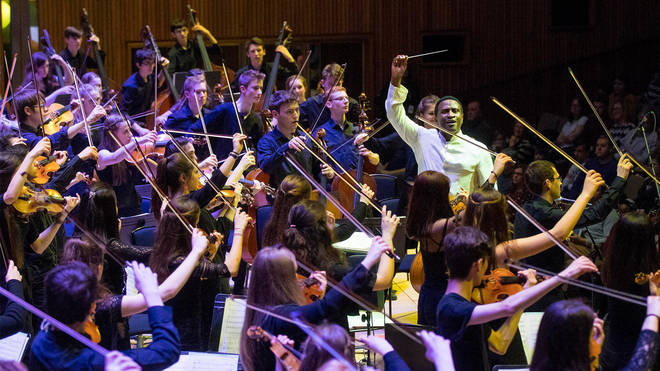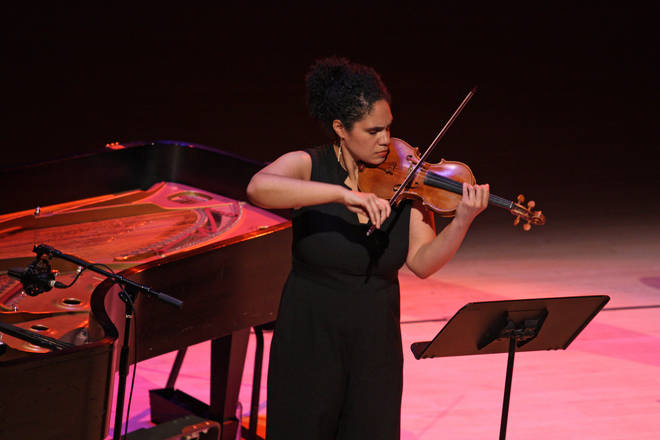- as chosen by the nation’s leading youth orchestra (I)

These are unequivocally music’s most hopeful melodies, according to Classic FM’s Orchestra of Teenagers...
Throughout the uncertainty of the pandemic, the brilliant teenage musicians of the (NYO) have embraced music as an essential tool for escape, motivation and hope for the days ahead.
And so, this summer, the world-leading orchestra will finally return to great UK stages with their , a series of hope-filled concerts at Saffron Hall (28 July), Southbank Centre (31 July), Birmingham Symphony Hall (6 August) and Leeds Town Hall (8 August), featuring star soloists from saxophonist Jess Gillam to violinists Nicola Benedetti and Francesca Dego. All concerts are free for those under the age of 19.
To find out which pieces of music feel like ‘hope’ to some of our country’s most exciting young musicians, we spoke to a handful of the NYO’s members, who told us of the composers and melodies that helped them a period of social isolation, silenced culture and uncertainty for their future.
Prelude from Cello Suite No.2 – J.S. Bach
“A Prelude, as an opening movement, is a moment of hope in itself as the composer begins their journey of sharing their work and message with us. The reflective phrasing mirrors the human experience of hope, illustrating how it often grows out of darker periods and rarely exists without setbacks. The piece finishes with triumphant fanfare-like chords which I interpret as Bach’s portrayal of musical optimism.”
– Max Rayworth, viola
Amazing Grace – spiritual
“‘’ is one of the first pieces I learnt on the bass, and listening to its stirring melody and poignant lyrics makes me reflect on the importance of belief, and to have faith in a more hopeful world.”
– Jelly Rowe, double bass
Cellist Yo-Yo Ma plays ‘Amazing Grace’ at the Celebrating America concertBella Ciao – Trad.
"Growing up with an Italian background I have often heard versions of a very famous Italian protest folk song by the name of ‘Bella Ciao’, first written in the late 1800s. The song was later adopted as an anthem of the anti-fascist resistance against Mussolini and Hitler. Today versions of ‘Bella Ciao’ are sung in many other countries as a modern-day anthem of freedom and hope. It is this theme of hope against hardship and despair that led many Italians to play the song in unison from their balconies at the beginning of the first lockdown in March last year.
– Gabriella Bavetta, violin
‘Nigun’ from the Baal Shem Suite – Ernest Bloch
“I learnt and played ‘Nigun’ from Ernest Bloch’s Baal Shem Suite during lockdown and it was the piece I turned to, to let my emotions run freely. There were so many emotions bottled up during the many months I spent at home, and this piece allowed me to move on and release those negative emotions in order to find a more hopeful outlook.”
– Sakura Fish, violin
Hope for Marimba – Adam Tan
“Adam Tan’s ‘Hope’ for marimba is beautiful in its honest simplicity, developing from a simple thread of tune. It is not a flashy or particularly challenging piece but has a pathos all of its own. The fact that it is new and composed in these difficult times gives the piece an extra appeal.”
– Paddy Davies, percussion
Symphony No.3 ‘Eroica’ – Beethoven
“So many of the pieces we are playing this summer tell a story musically and contextually of hardships; of ideals coming up against an anxious sense of reality. ’s Symphony No. 3 known as ‘Eroica’ (Heroic) was named for his contemporary Napoleon, until Beethoven’s admiration turned to bitter disappointment and the composer scrubbed the name from his manuscript. Charged with emotion, Beethoven’s momentous, expansive vision of human dignity and hope endures.”
– Kynan Walker, violin
Read more:
Malinconia from Sonata No.2 in A minor – Ysaÿe
“I started learning this piece during lockdown at a time when I was feeling particularly isolated, lonely and somewhat despondent. I was badly missing making music with others. It is called ‘Malinconia’, and its melancholic character reflected my mood at the time. It is peaceful, serene, and reflective – almost prayer-like, and made me feel hopeful that soon we could be out of the very strange last few months, moving forwards and collaborating once again.”
– Maya de Souza, violin
White Cliffs of Dover – Walter Kent
“During the war, this song was seen as a symbol of hope and unity, values which I think we have all shared throughout the pandemic. For me it represents the light at the end of the tunnel.”
– Georgina Bloomfield, violin
Soulforce – Jessie Montgomery
“There is so much music waiting to be explored from the last decade and the fact that NYO is helping introduce these to a wider audience is fantastic. Jessie Montgomery's one-movement symphonic work portrays a solitary voice struggling against the shackles of oppression. With a title that draws on Martin Luther King Jr.’s ‘I Have a Dream’ speech and embracing musical influences from big-band jazz, funk, hip-hop and R&B, Soul Force pays homage to the diverse musical voices that have risen up to create a space for free expression.”
– Will Clark, violin
Young violinist chooses composer and string player Jessie Montgomery’s ‘Soulforce’. Picture: Getty ‘Coming Home’ melody from ‘New World’ Symphony – Dvořák
“When came to USA he told his students to listen to the diversity of indigenous and immigrant voices. This music represents this individuality and diversity, which combines into a whole greater than its component parts. It brings hope to all who hear it.”
– Zak El-Shirbiny, cello
Neeme Järvi and the Verbier Festival Orchestra perform Dvorák Symphony No. 9(To be continue!)


